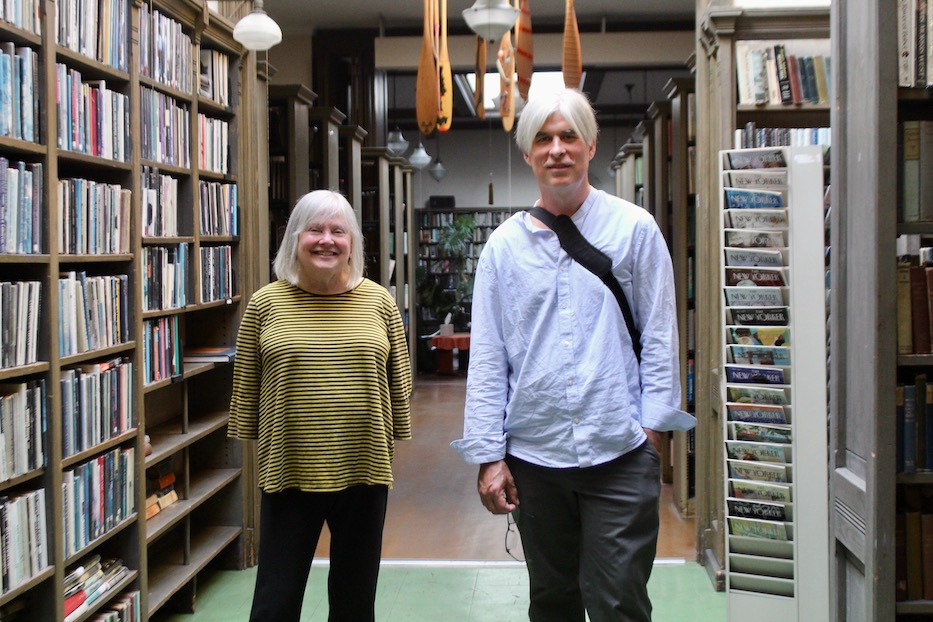
Books | Downtown | Institute Library | Arts & Culture | History
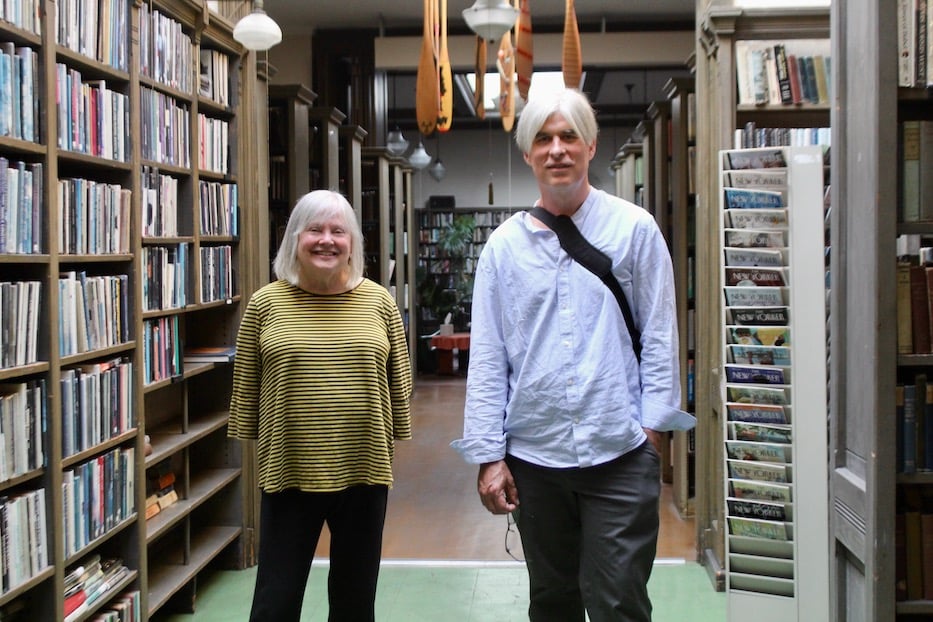
IL Executive Director Jan Swiatek and architect Joe Banks, who has long supported the IL and is also a former board member at the New Haven Preservation Trust. Lucy Gellman Photo.
A roof that doesn’t leak every time there’s a downpour. Sprinkler and HVAC systems that let the board sleep a little more easily at night. A fire alarm that gets emergency personnel to the building. And after years of planning and requests from the public and members alike, an elevator.
Those are all part of a long-awaited wish list of building repairs for the Institute Library (IL), which received $1.725 million from the State Bond Commission for its 847 Chapel Street home in late August. With that funding, the board can finally begin repairs, including on a leaky roof from 1877 and major accessibility concerns that have plagued the space for decades. The organization will host a reception with State Sen. Martin Looney to celebrate the funds later this month.
“How do you take what’s essentially a nineteenth-century library and preserve everything about it, but have it join the twenty-first century?” said Joe Banks, an architect and former IL and New Haven Preservation Trust board member who works as senior project manager in Wesleyan University’s facilities department, in a recent discussion at the library. “These are not very sexy things, but they cost an awful lot of money.”
Those repairs have been decades in the making. Started in the Palladium Building on nearby Orange Street, the IL moved into its current space in 1878, and has remained open there since. For almost 150 years, it has rented out the lower level space next door to retail, from a nineteenth-century clothier to Civvies Vintage and the Devil’s Gear Bike Shop.
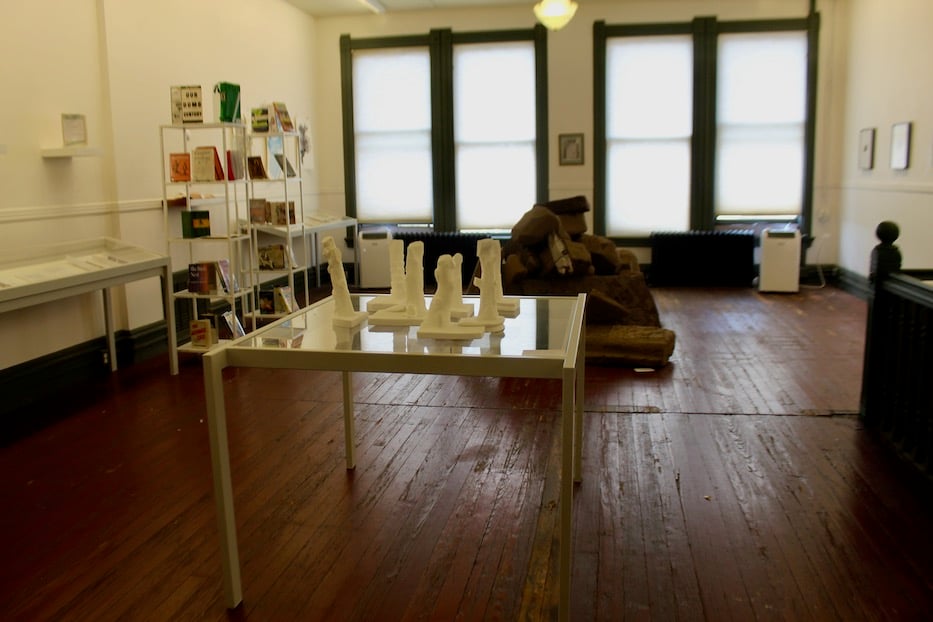 The upstairs gallery last month, while Decoys & Mimics was still on display. Lucy Gellman File Photo.
The upstairs gallery last month, while Decoys & Mimics was still on display. Lucy Gellman File Photo.
In recent years it has become home to multiple programs, from LGBTQ+ Youth Kickback to Amateur Hour (may she rest in peace), The Word, Tellebration New Haven, and a third-floor gallery with multiple shows per year. After the state-sanctioned murder of George Floyd in May 2020, the IL launched its Social Justice Reader program last year, in a growing effort to create a membership that represents the diverse and polyphonic city around it.
At the same time, the building has been falling apart. In the past decade, multiple directors have set their sights on building repairs, identifying the roof as one particular problem area, and the lack of an elevator as another.
From 2011 to 2014, Executive Director Will Baker grew membership to roughly 500, waking the building from its sleepy shell and also making clear how inaccessible it was. During Natalie Elicker’s subsequent tenure from 2014 to 2016, the IL brought in multiple grants, including $125,000 from the Connecticut Department of Economic and Community Development. It embarked on a fundraising campaign that never raised the $750,000 it hoped to.
When Valerie Garlick took over the role in 2016, she also saw damage to the building as the most immediate problem, and sought to secure funding that always seemed elusive. So did board members, who in early 2019 scrambled unsuccessfully to fix the roof even as they cut the budget significantly, terminating Garlick and appointing part-time Operations Manager Eva Geertz. When Covid-19 hit the city in March 2020, it struck the IL another blow, keeping its physical doors closed to programming for a number of months.
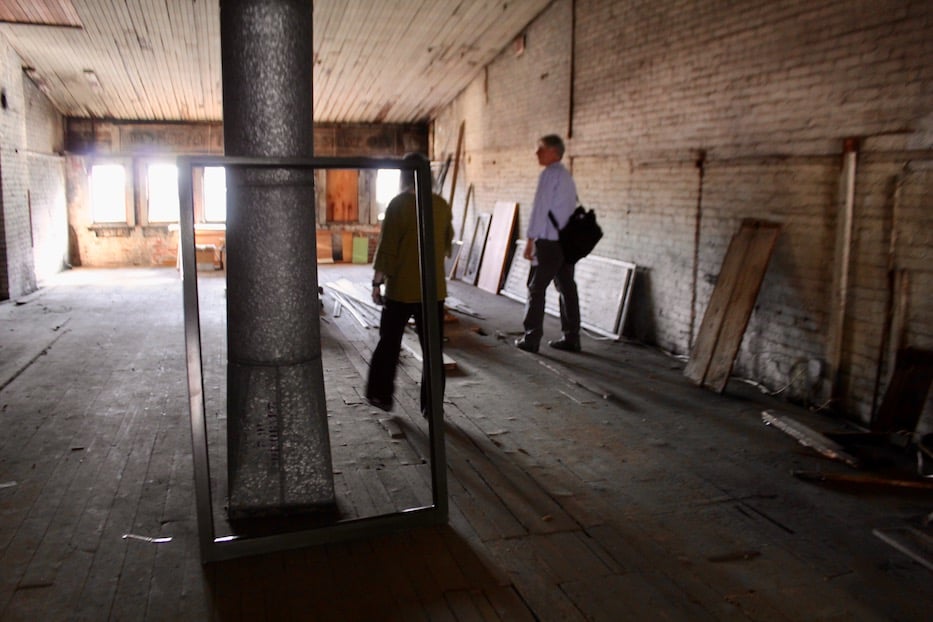
Swiatek and Banks in the attic. Lucy Gellman Photo.
Then this year—over two years into an ongoing global pandemic—funding from the State Bond Commission came through. Current Executive Director Jan Swiatek said that it would not have been possible without longtime board member Maryann Ott, who has been a champion of the space and worked toward the funding for years.
“Without the board, this place would be a pile of rubble,” Swiatek said.
It can’t come soon enough, she added. While “I didn’t even notice some of the damage” the first time she entered the building, it didn’t take her long to find it. In the IL’s space—which feels as if a person has stepped back in time, with contemporary titles to remind them of the present—water damage snakes across parts of the ceiling and appears midway down walls; it falls from the roof to the attic, and the attic to the second floor’s canvas ceilings.
The air inside is chilly and damp from October to March or April, and then reliably, sometimes stiflingly humid for the remainder of the year. Upstairs, a mobile AC unit barely cools the gallery on the hottest days of the summer, which are becoming more frequent (as are heavy rains and extreme weather events) with climate change. Banks recalled sitting in a board meeting a few years ago, and watching slack-jawed as water started “shooting through the roof” and into the meeting room.
Each time it rains, Swiatek makes a mad dash for buckets and tarps, laying them out in the building’s attic and beneath the roof in a second-floor reading room. She hasn’t done it alone, she said, praising both Geertz and the board for jumping in to help.
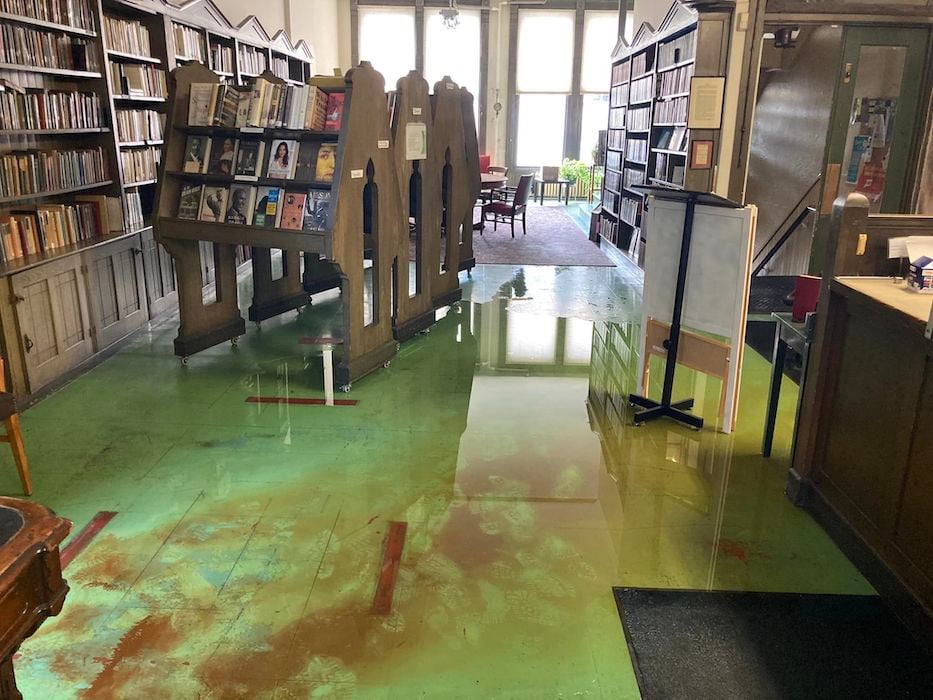
An image of flooding at the IL in September. Eva Geertz Photo via Facebook.
And so when the funding came through earlier this year, it did not take long for the board to form a list of internal priorities. In addition to the rubber roof—which last received care in the 1980s—the IL badly needs to update its HVAC system, a steam heat air handler that was last installed in 1956, according to Banks. Just last month, a malfunction resulted in a small lake between the book displays and the reference desk.
There is also the matter of an elevator, which has in the past 14 years become “an obsession,” Swiatek said. Since it moved into the 847 Chapel St. building, patrons have had to use a single, steep flight of stairs to access the space—making it impossible for people who are in wheelchairs or have limited mobility. The difficulty isn’t just money, said Banks—it’s also finding a place to put it that won’t destroy the current architecture of the building. Currently, that may look like installing an elevator in Devil’s Gear that would run behind where the checkout desk and a small bathroom currently sit.
Swiatek would also love to see renovations that would make the building more accessible to its Chapel Street and downtown neighbors, she said. She suggested that the basement, which opens out onto Federal Plaza, could be a place for downtown businesses to keep their records. Curator and artist Martha Wilette Lewis, who runs the gallery upstairs, has asked for better lighting in the space.
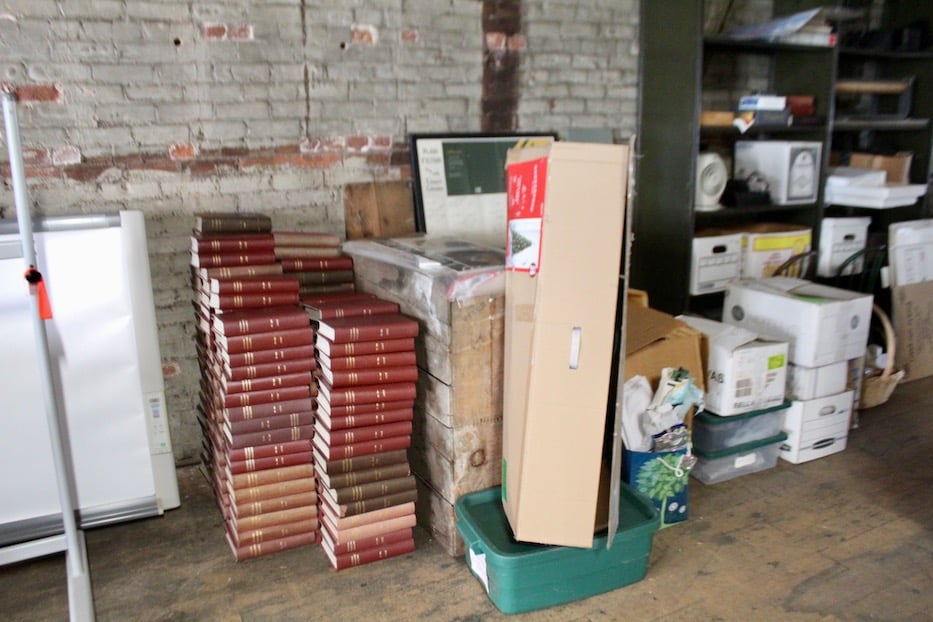
The attic: Storage space with event potential. Lucy Gellman Photos.
Above it, the IL’s attic currently exists as a storage space, where shafts of light from three street-facing windows illuminate old signs, stacks of boxes and almanacs as dust dances through the air. T-shirts celebrating the IL's signature pig roast fundraisers sidle up to long wooden cases that once held shoes, when the block was still home to a clothing and shoe store. With the right renovations, Swiatek can envision a functional event space. The board has also discussed an alarm system: someone broke in using the third floor earlier this year.
“I feel like we’re on the cusp of wonderful things happening,” Swiatek said. “Everybody comes here and falls under its spell.”
It’s an investment in not just the building’s present, but also its future, she and Banks added. The library is once again working to grow membership, which is $30 a year. After contracting to stay alive in 2019, it went through the same racial reckoning as many other white-led organizations in 2020. It is now in its second year of the Social Justice Reader, under the guidance of Elm City LIT Fest Founder IfeMichelle Gardin.
As it embarks on renovations, it is also holding small “visioning” sessions with members of the board and Baker. Both Banks and Swiatek said that they want the library to emerge from the sessions, and from renovations, feeling like it belongs to the city—and better reflects the needs and backgrounds of its residents.
“What should the library be after we’re gone?” Banks said. He added that he often returns to a document from the library’s centennial for guidance. “It talks about ‘Finding the light of a greater purpose.’ This can be something that belongs to the library, the block, the whole community.”
State Sen. Martin Looney will visit the Institute Library at 5:30 p.m. on Oct. 19. To RSVP, email eva@institutelibrary.org.

